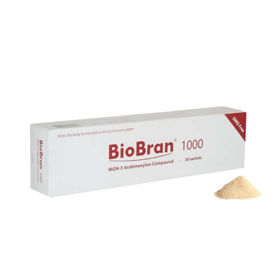Vprašanje stranke:
Kakšni so znaki in simptomi angine? Vprašanje anonimne stranke
Odgovor farmacevta:
Tipični znaki in simptomi angine vključujejo:
- Boleče grlo: eden izmed najbolj značilnih simptomov angine je boleče grlo, ki se lahko poslabša pri požiranju.
- Vnetje tonzil: tonzile, dve majhni žlezasti tkivi na zadnji strani grla, se lahko povečata, postaneta rdeči in lahko imata bele ali rumene obloge ali madeže.
- Povečane bezgavke: limfne bezgavke v vratu lahko postanejo povečane in občutljive na dotik.
- Visoka temperatura: angina lahko povzroči povišano telesno temperaturo, ki jo lahko spremljajo mrzlica in znojenje.
- Splošno slabo počutje: bolniki z angino se lahko počutijo utrujeno, izčrpano in brez energije.
- Izguba apetita: zaradi bolečine in nelagodja pri požiranju se lahko zmanjša apetit.
- Glavobol: nekateri bolniki lahko doživijo glavobol ali bolečine v telesu.
- Kašelj: v nekaterih primerih lahko angino spremlja tudi suh ali produktiven kašelj.
Pomembno je opozoriti, da se simptomi angine lahko razlikujejo glede na vzrok okužbe. Na primer, virusna angina je običajno blažja, ob njej pa se lahko pojavijo tudi drugi simptomi, kot so izcedek iz nosu, kihanje in bolečine v mišicah, medtem ko je bakterijska angina pogosto hujša in lahko povzroči zvišano telesno temperaturo in bolečine v trebuhu.
Kakšni so znaki angine pri otroku?
Angina pri otrocih lahko povzroči podobne simptome kot pri odraslih, vendar se lahko pri otrocih pojavijo nekatere specifične značilnosti. Pri otrocih je pomembno biti pozoren tudi na dodatne znake, kot so izpuščaji, bruhanje ali težave z dihanjem, ki lahko kažejo na resnejše zaplete ali druge bolezni. Če opazite katerega koli od teh simptomov ali če se otrok počuti zelo bolno, je priporočljivo, da se posvetujete z zdravnikom.
Tipični znaki angine pri otrocih vključujejo:
- boleče grlo
- vnetje tonzil
- povišano telesno temperaturo
- slabost in utrujenost
- izgubo apetita
- občutljive bezgavke
- glavobol
- kašelj
Ali se simptomi angine razlikujejo glede na starost?
Da, simptomi angine se lahko nekoliko razlikujejo glede na starost bolnika. Čeprav so osnovni znaki angine pogosto podobni pri otrocih, mladostnikih in odraslih, se lahko intenzivnost simptomov, sposobnost izražanja nelagodja ter nekateri dodatni znaki vseeno razlikujejo.
Pri otrocih so lahko simptomi angine pogosto manj specifični in se lahko manifestirajo bolj splošno, na primer z nejasno pritožbo zaradi bolečega grla, slabosti ali izgube apetita. Poleg tega so lahko otroci manj sposobni izraziti svoje simptome in nelagodje, zato je pomembno biti pozoren na spremembe v vedenju ali razpoloženju.
Pri mladostnikih se lahko simptomi angine pogosteje izrazijo bolj podobno odraslim, vendar se lahko v nekaterih primerih pojavijo tudi dodatni znaki, kot so utrujenost, bolečine v mišicah in glavoboli, ki so pogosto povezani z virusnimi okužbami.
Pri odraslih so simptomi angine običajno podobni tistim pri mladostnikih, vendar se lahko intenzivnost simptomov razlikuje. Odrasli imajo običajno večjo sposobnost izražanja svojih simptomov in lahko natančneje opišejo svoje težave.
Poleg tega se lahko resnost simptomov angine razlikuje tudi glede na osnovni vzrok okužbe. Na primer, bakterijska angina, kot je streptokokna angina, je običajno bolj intenzivna in pogosto povzroči višjo telesno temperaturo ter hujše bolečine v grlu in splošno slabost v primerjavi z virusno angino.
Kljub tem razlikam je pomembno, da se simptomi angine, ne glede na starost bolnika, jemljejo resno in se poišče zdravniško pomoč, če opazite katerega koli od značilnih znakov angine. Zdravnik lahko opravi pregled, postavi diagnozo in predpiše ustrezno zdravljenje, ki lahko vključuje zdravila za lajšanje simptomov in zdravljenje osnovne okužbe.
Zanimivo branje: Ali je angina nalezljiva?
Zanimivo branje: Škrlatinka prvi znaki







 Facebook
Facebook
 Instagram
Instagram
 info@moja-lekarna.com
info@moja-lekarna.com

